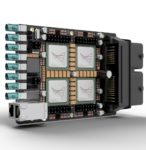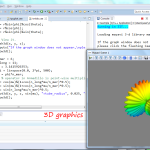E4S, the open source Extreme-Scale Scientific Software Stack for HPC-AI scientific applications, now incorporates AI/ML libraries and expands GPU support to include the Nvidia Grace and Grace Hopper architectures. E4S is a community effort to provide open-source….
Search Results for: OpenCV
DOE: E4S for Extreme-Scale Science Now Supports Nvidia Grace and Grace Hopper GPUs
Using Inference Engines to Power AI Apps Audio, Video and more
With the demand for intelligent solutions like autonomous driving, digital assistants, recommender systems, enterprises of every type are demanding AI powered – applications for surveillance, retail, manufacturing, smart cities and homes, office automation, autonomous driving, and more coming every day. Increasingly, AI applications are powered by smart inference-based inputs. This sponsored post from Intel explores how inference engines can be used to power AI apps, audio, video and highlights the capabilities of Intel’s Distribution of OpenVINO (Open Visual Inference and Neural Network Optimization) toolkit.
Quadric.io to Build “Supercomputer for Edge Devices”
Today chip startup Quadric.io announced plans to build the world’s first “supercomputer” specifically designed for the real-time needs of autonomous systems. “Instead of building a heterogeneous system with CPUs/GPUs/FPGAs & AI chips and dealing with that complexity of software and hardware integration, Quadric has the technology to handle most of the application in a single unified hardware architecture and software model.”
Making Computer Vision Real Today – For Any Application
With the demand for intelligent vision solutions increasing everywhere from edge to cloud, enterprises of every type are demanding visually-enabled – and intelligent – applications. Up till now, most intelligent computer vision applications have required a wealth of machine learning, deep learning, and data science knowledge to enable simple object recognition, much less facial recognition or collision avoidance. That’s changed with the introduction of Intel’s Distribution of OpenVINO toolkit.
Putting Computer Vision to Work with OpenVINO
OpenVINO is a single toolkit, optimized for Intel hardware, that the data scientist and AI software developer can use for quickly developing high-performance applications that employ neural network inference and deep learning to emulate human vision over various platforms. “This toolkit supports heterogeneous execution across CPUs and computer vision accelerators including GPUs, Intel® Movidius™ hardware, and FPGAs.”
Tech-Decoded Video Gallery
Welcome to the Tech-Decoded Video Gallery Welcome to Tech.Decoded, an information hub designed for developers. Here you’ll find a continuously growing library of knowledge curated to help you get the most out of modern hardware, bolster your competitive edge, and get to market faster. Videos: Accelerating AI from the Cloud to the Edge Development Tools are More […]
Creating Applications with the Intel Computer Vision SDK
“In order for developers to be able to focus on their application, a Vision Algorithm Designer application is included in the Intel Computer Vision SDK. This gives users a drag and drop interface that allows them to create new applications on the fly. Large and complex workflows can be modelled visually which takes the guesswork out of bringing together many different functions. In addition, customized code can be added to the workflows.”
Announcing the Ceemple Tool for C++ Technical Computing
Programmers have a new tool for technical computing in Windows. Ceemple is an innovative solution enabling rapid C++ based scientific computing.










